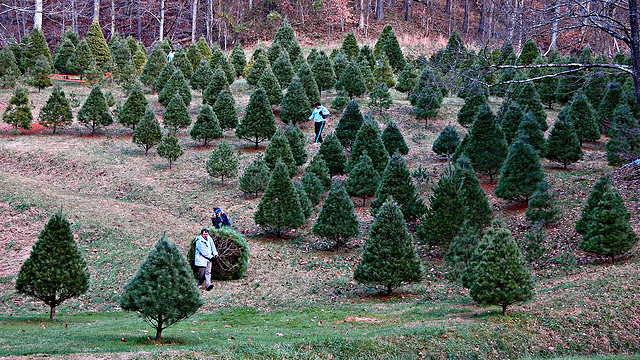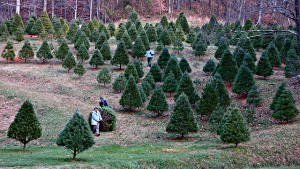Last week, I went to buy a Christmas tree at the Cal Forestry Club’s annual tree sale fundraiser, and instead of full, lush conifers that tapered to a perfect pointy crown, I found only short little trees, with trunks that meandered left and right and branches that were sparse and uneven. These weren’t the picked-over remains—all the trees the club had sold that week resembled Charlie Brown’s tree. The Berkeley students from the Forestry Club described these trees as “free range,” in contrast to trees from Christmas tree farms, which are painstakingly grown to be perfect.
Members of the Cal Forestry Club had chopped these trees down themselves, in the Sierra Nevada Mountains. The trees would have been chopped down anyway, Berkeley student and Forestry Club member Jamie Richards explained. They were growing in clumps that had to be thinned out to reduce competition between trees. Sierra Pacific Industries owned the land and donated the trees for the fundraiser. A handful of students packed 463 trees into a 24-foot U-Haul and steered it down an icy Highway 50 towards Berkeley.
The trees they were selling were red firs, white firs, and incense cedars. I figured they didn’t look like typical Christmas trees because they were the wrong species. Jamie said that most Christmas trees are indeed different species—noble firs, grand firs, Douglas firs, and spruce are popular choices—but their perfect structure has more to do with the way they’re grown than their genetic makeup.
On a Christmas tree farm, it takes a lot of work to get the trees to grow. The trees are “hedged” or pruned so they grow full and bushy, and their trunks are trained to grow straight. Most conifer species grow at high elevations, but most Christmas tree farms are at lower elevations; the trees need to be nurtured with fertilizer so they’ll grow in soil and weather conditions that are not the same as the conditions where they evolved.

